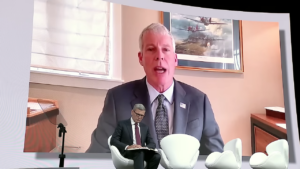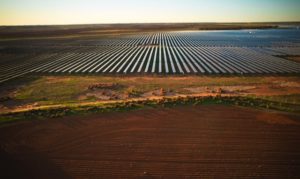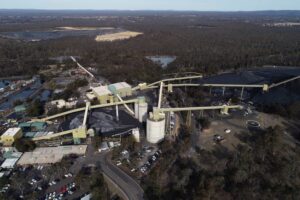 South Australia energy minister Tom Koutsantonis has slammed the federal government’s proposed National Energy Guarantee, saying it is nothing more than an attack on renewable energy, and cannot be supported.
South Australia energy minister Tom Koutsantonis has slammed the federal government’s proposed National Energy Guarantee, saying it is nothing more than an attack on renewable energy, and cannot be supported.
“This is of great concern to South Australia,” Koutsantonis said while addressing a conference in Adelaide. “We cannot support the National Energy Guarantee …. And the reason is because at its core, it is an attack on renewable energy.
“The National Energy Guarantee assumes that renewable energy is the problem … it assumes that renewable energy has done harm to the grid and must be stopped somehow.”
“It’s not a National Energy Guarantee at all, it is a guarantee for coal. It is an attempt to subsidise and keep alive coal fired generation in the largest state in country.
“Our fear is that it will do the opposite of lowering prices …. and entrench monopoly behaviour (of fossil fuel generators).”
Koutsantonis’ comments reflect widespread and growing concerns about the nature of the NEG, it’s failure to address emissions, its modeling that suggests renewables will be stopped in their tracks, it’s likely impact of raising prices rather than lowering them, and entrenching the power of the incumbent generators and their coal assets.
Those concerns have been raised by numerous market analysts and energy experts, and by Professor Ross Garnaut, whose company Zen Energy is proposing up to 1GW of solar and various form of storage to help power the Whyalla steel works and other major industrial users.
South Australia, along with others states, will vote later this month on whether to ask the Energy Security Board to further the pursuit of an ESB.
The states, however, will be presented with modeling that assumes inflated prices for wind and solar, a crippling “cost of capital” that will somehow be eliminated if the policy is in place, and little emissions reductions before 2030 and none afterwards.
Koutsantonis said he despaired of a scheme that offered no penalties for breaking what emissions targets there were, but would likely create priority for “sysnchronous” generation such as coal plants.
“This guarantee …. spells dirty coal. How can any jurisdiction support that?
“It doesn’t meet our needs. It doesn’t meet the Paris agreement … all it is is a nod and a wink to the coal industry. And we can’t support it.”
His comments come as The Guardian reveals, through the so-called Paradise papers, how huge amounts of money were shifted through offshore tax-havens by at least one big coal generator, even as they received handouts from taxpayers to protect them from the carbon price.
Those payments, which amounted to $5.5 billion at the time, shocked many in the industry. The chief lobbyist for this payment was John Pierce, the head of the Australian Energy Markets Commission who is leading the current charge for the NEG to be introduced.
According to the new book “An activist’s life” by former Greens leader Christine Milne, who helped design the carbon price in 2011 (it was in place from 2012 to 2014), it was Pierce who pushed hard for an massive compensation for the coal generators.
“John Pierce argued that massive compensation to coal fired generators in addition to government guaranteed loans was essential,” Milne says.
“He was an advocate for the coal fired generators, pure and simple. The (then Labor) government embraced his advice.”
Pierce and the AEMC have since been criticised – by Garnaut and others – for delaying key reforms such as the 5-minute rule that would encourage battery storage and eliminate much of the gaming on wholesale markets, and for resisting changes that would favour other emerging technologies.










